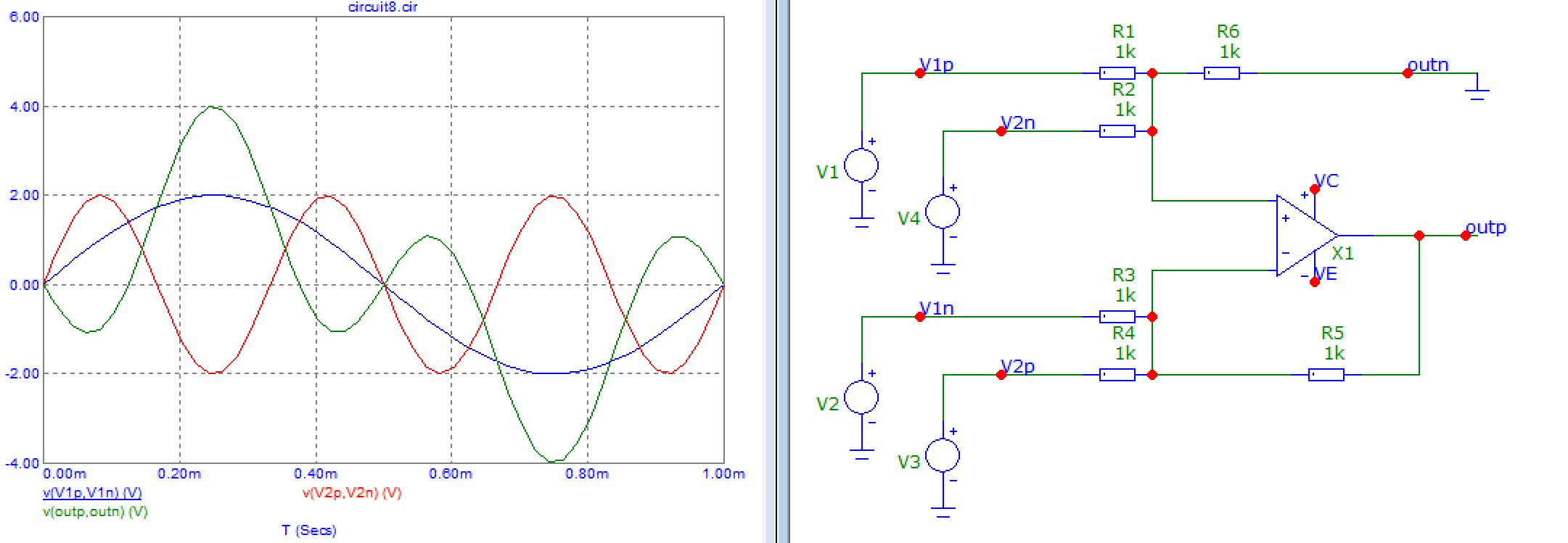I know how to subtract two single-ended voltages with an opamp configured as a subtractor.
I'm learning about fully differential signal processing and I'm wondering if it is possible to subtract two balanced fully differential signals without converting them to single-ended first.
Say I have two analog signals.
V1_D = V1_P - V1_N
V2_D = V2_P - V2_N
What I want is V3_D = V1_D - V2_D
By algebra this is V3_D = (V1_P - V1_N) - (V2_P - V2_N)
So, it looks like I could do it with three subtractor opamps. But would I run into a dynamic range problem?
Imagine I have a 5V VDD and my signals are rail to rail. So, V1_P - V1_N could be anywhere between 5 and 0. It doesn't seem to work unless I also scale the voltages down by 2. (which may be OK).
Is there an easier solution I'm missing here?
Thank you for your time.


